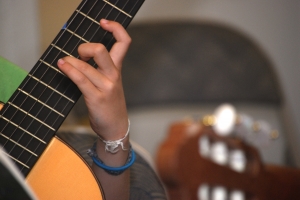Connecting notes successfully in a melody means the difference between sounding like a typewriter and sounding like a singer with a beautiful voice. I often use the phrase “passing off the pinch” to help describe the principle of correct left hand movement that occurs between notes of a melody. The basic principle is simply to ensure the new pinch is down before lifting the old pinch away. Or, from the old pinch’s perspective, make sure to stay down and active until the new pinch is in place. This may sound simple but it presents many challenges to a young student. The first challenge is training the fingers of the left hand to temporarily (and briefly) pinch two notes simultaneously. This requires more left hand strength and extension capabilities. The other challenge is lifting the old pinch at precisely the correct time or knowing how long to keep the old pinch active.

Sit and watch your child play through a melody at turtle speed and observe whether a slight overlap in pinching occurs from note to note. This motion, unfortunately, is not possible between every single note of a given melody, though it is often possible to leave a pinch down even when moving to an adjacent open string. Nevertheless, by watching out for this proper movement (and encouraging your child to notice it) in the early stages of learning, your child’s fingers will tend to remain closer to the fretboard and ultimately help your child become more technically efficient and more musical. And, as a listener, your ears will enjoy the beauty of what your child creates even more!

Recent Comments